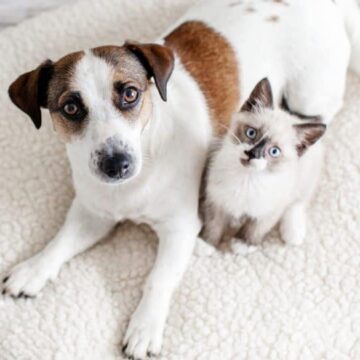In recent years, pet insurance has gained popularity as more pet owners recognise the importance of protecting their beloved companions from unexpected medical expenses. Like humans, pets can face health issues or accidents requiring costly veterinary treatments. However, understanding the intricacies of pet insurance can be overwhelming, with many coverage options in the market.
While coverage costs vary among insurance providers, you can expect to spend at least a few thousand per year to cover your pet for accident- and illness-related problems.
This article aims to guide how to insure your pet effectively. We will discuss the different types of pet insurance products, what may not be covered, and when it’s the right time to get pet insurance.
Having a pet is like bringing a new family member home. It also entails allocating money in the budget to cover predictable and unforeseen maintenance, upkeep, and health costs. To cover various costs, it pays sense to compare pet insurance options. Pet insurance strives to give pet owners financial security for their animal’s medical and hospitalisation costs.
Selecting The Ideal Product*
A range of products are available from insurance firms. Some offer life or accidental insurance, some pay for hospitalisation or medical expenses, while others cover pet theft or wandering. Some insurance policies additionally offer protection from or assistance with defending any third-party responsibility that results from the pet. Insurance policies may cover the cost of vaccinating a pet. When choosing a product, one should consider premiums.
When Should I Buy?
To qualify for pet insurance for the dog plan, the pet must be at least eight weeks old. The maximum age at which insurance may be purchased may also be specified by the insurance company, such as ten years in the case of dogs.
What Is Left Out*
Any operations or procedures that are not the consequence of a disease or accident are not covered. Insurance does not pay for procedures performed during pregnancy or childbirth, for grooming, dental or cosmetic reasons, or to treat abnormalities.
Many pet health insurance policies include dogs but don’t consider some other animals to be pets.
Depending on whether the pet is an indigenous or foreign breed, dog health insurance premiums may increase or decrease.
As responsible pet owners, ensuring the well-being of our furry friends is a top priority. Pet insurance can offer peace of mind by safeguarding against the financial burden of unexpected veterinary bills. In this article, we explored the various pet insurance products available and emphasised the importance of carefully considering coverage options to meet your pet’s needs. We also highlighted some common exclusions to be aware of, such as pre-existing conditions and hereditary diseases. Lastly, we discussed the optimal time to get pet insurance, recommending that enrolling your pet while they are young and healthy is ideal. By making an informed decision and selecting the right pet insurance plan, you can protect your beloved companion and ensure their access to quality veterinary care whenever needed. ^
^ Claims are subject to terms and conditions set forth under pet insurance policy .
*Standard T&C Apply
Insurance is the subject matter of solicitation. For more details on benefits, exclusions, limitations, terms, and conditions, please read the sales brochure/policy wording carefully before concluding a sale.















